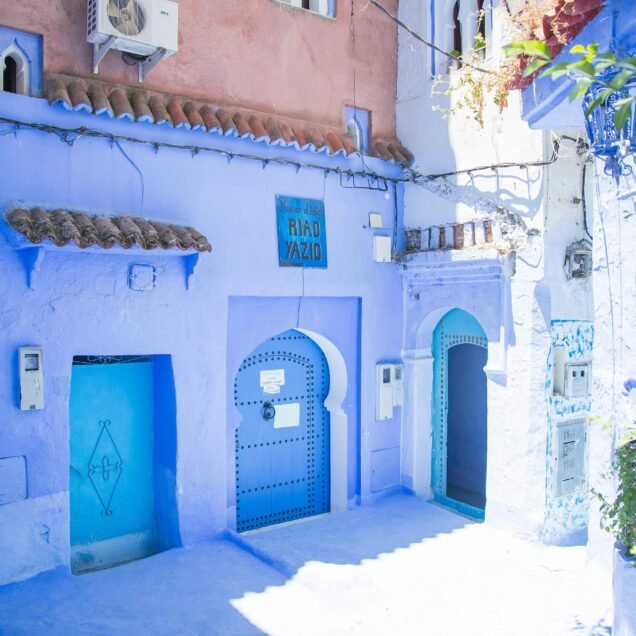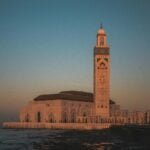

Chefchaouen, often referred to as the “Blue City,” is a picturesque town nestled in the Rif Mountains of northwest Morocco. Renowned for its distinctive blue-washed buildings and narrow, winding streets, Chefchaouen offers a unique blend of cultural charm, natural beauty, and historical significance. Here’s an overview of this enchanting city:
### Historical Background
– **Founding and Origins**: Chefchaouen was founded in 1471 by Moulay Ali Ben Moussa Ben Rached El Alami, a descendant of the Prophet Muhammad. It served as a fortress against Portuguese invasions and later as a refuge for Jews and Muslims fleeing the Spanish Reconquista.
– **Cultural Influence**: The town’s architecture and culture reflect its historical interactions with various civilizations, including Andalusian, Moorish, and Jewish influences.
### Culture and Atmosphere
– **Blue Architecture**: Chefchaouen is famous for its blue-painted houses and buildings, a tradition believed to have been brought by Jewish refugees in the 1930s. The blue color symbolizes spirituality, protection from mosquitoes, and a sense of tranquility.
– **Artisanal Crafts**: The city is known for its skilled artisans who produce woven blankets, wool garments, and intricate handicrafts. Visitors can explore local markets filled with traditional goods and souvenirs.
### Natural Beauty
– **Mountainous Setting**: Situated in the Rif Mountains, Chefchaouen offers stunning panoramic views and opportunities for hiking and trekking.
– **Cascading Waterfalls**: Nearby attractions include Akchour Waterfalls, where visitors can hike through scenic landscapes and swim in natural pools.
### Tourist Attractions
– **Medina**: Chefchaouen’s Medina (old town) is a UNESCO World Heritage site, characterized by its blue-hued buildings, narrow alleys, and traditional Moroccan architecture.
– **Kasbah Museum**: Located in the heart of the Medina, the Kasbah houses a small ethnographic museum showcasing local artifacts and history.
– **Great Mosque**: The Grand Mosque, dating back to the 15th century, is a significant religious and architectural landmark in the city.
### Culinary Delights
– **Local Cuisine**: Chefchaouen offers a variety of traditional Moroccan dishes, including tagines, couscous, and pastries like sfenj (Moroccan doughnuts).
– **Tea Culture**: Mint tea is a popular beverage enjoyed throughout Morocco, and visitors can experience traditional tea ceremonies in local cafes and restaurants.
### Conclusion
Chefchaouen’s blend of stunning natural surroundings, unique blue aesthetic, and rich cultural heritage makes it a captivating destination for travelers seeking an authentic Moroccan experience. Whether exploring the Medina’s labyrinthine streets, hiking in the mountains, or simply savoring local cuisine, visitors to Chefchaouen are sure to be enchanted by its beauty and charm.




